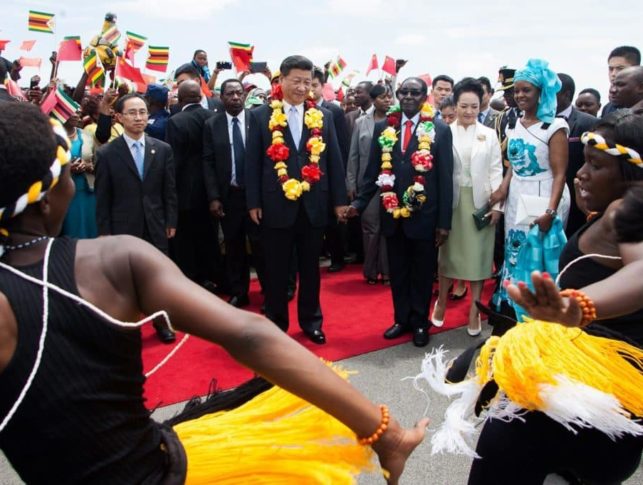While much of the aid China provides to Africa comes in the form of investment and loans for infrastructure and economic development, the Asian nation has also given the continent dozens of government structures and sports stadiums.
For example, China has promised the government of Zimbabwe $46 million for a new building to house the nation’s parliament. The building will be located in Mount Hampden, about 10 miles outside the capital city of Harare.
Zimbabwe’s Senate and House number a total of 300 members and the legislative bodies have outgrown the current parliament building.
The pledge followed the Forum on China-Africa Cooperation in Johannesburg last December. The Chinese government also agreed to forgive $40 million in Zimbabwean debt to the Asian nation. At the same time, China pledged to invest more than $1 billion in development of a thermal power plant in Zimbabwe.
In return, Zimbabwe agreed to make the Chinese Yuan legal tender. Zimbabwe abandoned its own dollar currency seven years ago after a period of hyperinflation and uses multiple currencies, including the United States dollar and the South African Rand.
Support fosters economic ties
As China seeks to strengthen its economic ties to the continent, support public and government structures has emerged as one facet of the strategy. With its interest in Africa’s minerals and other resources, China has become a major investor and financier of infrastructure projects.
In 2012, China funded a $200 million headquarters in Addis Ababa for the African Union, dubbing it “China’s Gift to Africa.” The building, 100 meters tall, dominates the skyline of the Ethiopian city. Most of the materials and furnishings were imported from China and more than 1,000 construction workers from China and Ethiopia worked on the project.
China also built an opulent presidential office complex for Mozambique, complete with crystal chandeliers and marble interiors. The structure, which opened in 2014, overlooks Maputo Bay. Cost was not disclosed.
China also donated $25 million for a new building to house the offices of the president and vice president in Uganda and provided furnishings from China. The building, next to the Ugandan parliament building, opened in 2011.
In Sierra Leone, China built a new foreign ministry complex and offices for parliament as well as a 100-bed friendship hospital outside Freetown. China also renovated government offices in Zambia.
China conducts “stadium diplomacy”
The Asian nation has also conducted an effort dubbed “stadium diplomacy,” building more than a dozen sports venues on the continent.
They include Mozambique National Stadium which was built to Olympic standards at a cost of $80 million and seats 42,000 spectators; Tanzania National Stadium, also built to Olympic standards and accommodating 60,000 spectators and built with a contribution of more than $33 million from China; and Malawi National Stadium, which can seat 40,000 and cost $70 million.
China also assisted with construction of four stadiums for the 2010 African Cup of Nations competition in Angola. The complex cost an estimated $600 million. For the 2012 African Cup, Equatorial Guinea built two stadiums with Chinese assistance while 2012 co-host Gabon enjoyed a gift from China of a $60 million stadium.
Chinese investment, trade on the rise
The millions of dollars spent on public structures are dwarfed by ongoing Chinese investment in the continent. In December, China pledged to $60 billion to Africa, most of it in the form of loans and export credits.
China said its cumulative direct investment to Africa over 15 years ending in 2014 was $30 billion.
China has become by far Africa’s biggest trading partner, and more than one million Chinese laborers and traders have moved to the continent in the last decade.
Trade between Africa and China was $220 billion in 2014 and was expected to increase to $300 billion in 2015.
The United States and India are also major trading partners with Africa, according to the World Bank. In 2014, China accounted for 15 percent of imports to Africa and 6.5 percent of its exports. The United States represented 5.5 percent of imports and nearly 5 percent of exports. India accounted for 6 percent of imports and more than 8 percent of exports. Africa also imports about 5 percent of its goods from Germany and exports more than 6 percent to the Netherlands and 4.5 percent to Spain.

